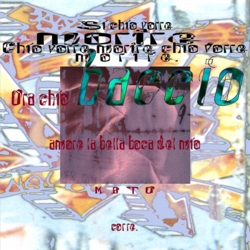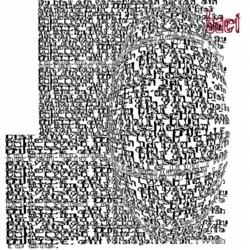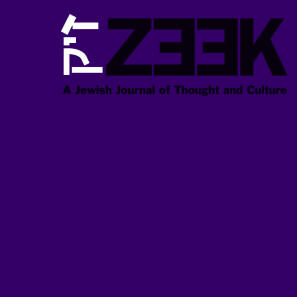 May 07
May 07
Hillel Zeitlin: The Foundations of Hasidism
by Rabbi Or N. Rose
p. 2 of 2

It is said of one tzaddik, that “there was no one that saw his holy dance and did not repent, because he caused the hearts of all those who saw him to weep and rejoice simultaneously” [Sipurei Tzaddikim].
There is yet a third form of visualization: A person sees the light of Torah and the mitzvot that shines through the letters of the Torah, and he cleaves to the letters and to the holiness enveloped by them…
When a person reads from the Torah and sees the light of each letter, even if he doesn’t read it properly God does not scrutinize him, because he reads with great love and enthusiasm. It is like the love of a father for his young child. When the child asks his father for something but mispronounces the words, the father still feels great joy... So it is when a person says words of Torah with love. The Holy Blessed One loves the person so much that He does not scrutinize the person to see if he is reading correctly [Likutei Yekarim, Shemot].
The Torah is filled with letters, punctuation marks, and trope symbols, but the Torah’s inner light, which is from Ayin, is superior to all of these things. The light is the foundation upon which the Torah is built, because the light is the Creator, may He be blessed – God and the Torah are one. And everyone who engages in Torah study must cleave to this light, which is called Ayin [Divine Nothingness], and then the light will certainly turn him to the good. When one cleaves to the inner light of the Torah, he is transformed into a throne for God’s dwelling and emanation... [Me’or Einayim, Hukat ].
One should look at everything as if the Shekhinah stands before him. In order to do this, he must sharpen his vision so much so that he no longer sees the outer garments of things [only the divine vitality within]. He must become so accustomed to envisioning the Divine presence that he no longer encounters it as something intellectual, abstract, or inspiring, but as something he actually sees…
This is visualization, but what is contemplation? Regarding the issue of raising the attributes there are three kinds of contemplation: (1) Contemplation from the perspective of God and the world. (2) Contemplation from the perspective of the soul. (3) Contemplation from the perspective of the evil inclination.
What is contemplation from the perspective of God and the world? ...
 “Know Him in all your ways” [Psalms 3:6] – one should be conscious of every action and movement, sight and sound, thought and utterance, so that he knows which [divine] attribute is the source of each of these phenomena. A person should ask himself, “Is this not [a manifestation of] God, for how could it exist without Him?” One must connect everything to God.
“Know Him in all your ways” [Psalms 3:6] – one should be conscious of every action and movement, sight and sound, thought and utterance, so that he knows which [divine] attribute is the source of each of these phenomena. A person should ask himself, “Is this not [a manifestation of] God, for how could it exist without Him?” One must connect everything to God.
And what is contemplation from the perspective of the soul?
… There is an infinite difference between all heavenly creatures—even those angels that were created from Ayin, but are vitalized by a lower attribute (that is, through the divine vitality that flows forth from Ein Sof, may He be blessed, to sustain the worlds) – and the soul of man. For the human soul is drawn from the inner vitality of the Divine [Me’or Einayim, “The Letter on Repentance,” Chapter 4].
…[However] The soul descends to the lowest of all rungs, where we use it for all kinds of lowly and impure purposes. We must pay close attention to the pain and impoverishment of this princess, who is sullied through our crude and vulgar behavior. If you sin, your soul sins with you. It is like a person who captures a king and shoves the monarch into a latrine. When you sin, take pity on the divine spark within – on the name of God that dwells with your sin...
God surrounds all worlds and fills all worlds – He surrounds and fills an infinite number of palaces and worlds, and in every palace and world there are an infinite number of angels. These angels all ask, “Where is the place of His glory?” And they respond, “His glory fills the whole earth” – this is man. While God established all of the upper and lower worlds, He chose man [over all other creations], and brought him close through the attachment of the soul… through the cleaving of the spirit. But man lowers and sullies the divinity [within him]... Let man take pity on God’s beauty and stop sinning.
This is contemplation from the perspective of the soul. How does contemplation from the perspective of the evil urge function? The Besht taught that the Master of the World is hidden within sin. The meaning of this teaching is that the letter “aleph” in the word “sin,” het, [spelled het-tet-aleph] is silent but a part of the root of the word. This alludes to God’s mastery [alupho] over the world. It also hints at the number one [aleph, the first letter in the Hebrew alphabet] and to God – the beginning, middle, and end of all things. God even dwells in sin – within the trickery, seduction, and cunning, of the evil inclination.
The evil inclination carries out God’s wishes, and man must do the same. The evil inclination does God’s bidding; it fulfills its mission with perfect faith, seducing man into sinning and rebelling against God. Man must also fulfill God’s desires by ignoring the seductive call of the [evil] inclination.
“When you wage war against your enemy and you settle his land” [Deuteronomy 5:16]…. One can conquer the evil inclination by making use of its strategies. The evil inclination is zealous in its work to fulfill its divine mission by exposing man to sin. One should learn from this example: he should be equally zealous in his efforts to shut out the evil inclination.
To what can this matter be compared? It is like two people who exchange secret signs of communication: these individuals agree that if one of them should hold up a certain sign that says: “do this,” the other will know not to do it [“The Holy Letter” of R. Abraham Kalisk].
God speaks to the human being through the evil inclination: “Do not succumb to its wishes for you!”
Translator's Conclusion
How might the contemporary reader integrate Zeitlin’s teachings on hasidism into his or her life? Does this pantheistic vision of reality resonate with your life experience? Do you believe that God is both the transcendent source of creation and the immanent vitalizing force renewing life moment to moment?
And what of the hasidic notion that the difference between good and evil is not definite, but relative? Is God’s goodness present in all people, places and times, even if sullied or muddled? Can one say such a thing after Auschwitz, Cambodia, and Rwanda (and now Darfur)?
Finally, while many of today’s Jewish seekers include various contemplative exercises (mostly adapted from eastern traditions) as a part of their spiritual discipline, do the images and ideas—including the centrality of the tzaddik—outlined by Zeitlin speak to you?
As a student of hasidism, who is actively working on translating (in the broadest sense of the word) the texts and practices of this mystical tradition for contemporary life (like Zeitlin and other “neo-hasidic” authors), I would welcome your comments. I can be reached at orose[at]hebrewcollege[dot]edu.
Rabbi Or N. Rose is Associate Dean and Director of Informal Education at the Rabbinical School of Hebrew College. The author of two recent books on Jewish spirituality, Or is currently completing his doctorate in Jewish mysticism at Brandeis University.










